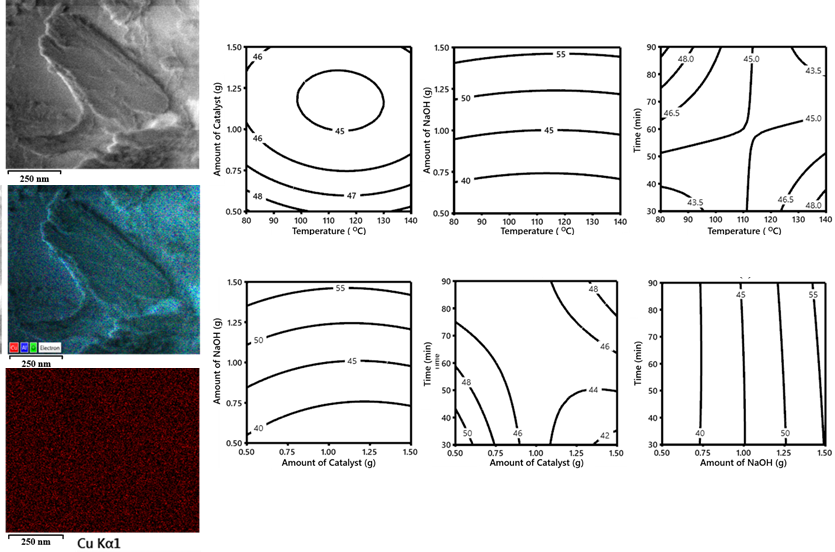Optimization of Vanillin Production from Lignin Using Catalytic Depolymerization over a CuO/Al2O3 Catalyst
Main Article Content
Abstract
The optimal conditions for vanillin production from lignin depolymerization using CuO/Al2O3 catalysts were determined by combining Box-Behnken design (BBD) and response surface methodology (RSM). Independent variables, including temperature (80–140 °C), NaOH loading (0.5–1.5 g), time (30–90 min), and catalyst weight (0.5–1.5 g), were investigated to determine the optimal conditions, with the concentration of vanillin being the dependent variable. A CuO/Al2O3 catalyst was prepared by impregnation method. The vanillin obtained from the reaction was analyzed using high-performance liquid chromatography (HPLC). The maximum obtained vanillin concentration of 59.14 mg·L-1 was achieved with a temperature of 80 °C, a reaction time of 90 min, NaOH loading of 1.5 g, and 1.5 g of catalyst. The amount of NaOH was the most influential factor governing the obtained vanillin concentration. Regression analysis was performed to determine the formula describing the vanillin concentration in terms of the independent variables with a reasonable degree of accuracy (R2 = 0.87). This study shows that the optimal conditions for the depolymerization of lignin to vanillin over a CuO/Al2O3 catalyst can be achieved under milder conditions than those reported previously.
Article Details

This work is licensed under a Creative Commons Attribution-NonCommercial 4.0 International License.
Published articles are under the copyright of the Applied Environmental Research effective when the article is accepted for publication thus granting Applied Environmental Research all rights for the work so that both parties may be protected from the consequences of unauthorized use. Partially or totally publication of an article elsewhere is possible only after the consent from the editors.

